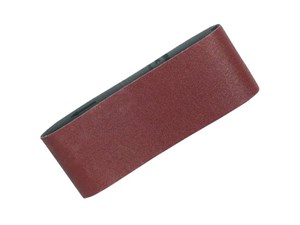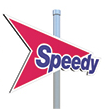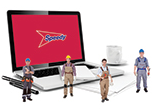
How to Choose the Right Sandpaper for the Job
Sandpaper is a rough surface designed to smoothen wood or metal, shape wood, or create a slightly abrasive surface in preparation for painting.
The roughness is caused by numerous sharp edges glued onto a paper sheet. Sandpaper is designed to be used on its own by hand, or on the surface of a sander power tool for more power and a quicker result.
You can also purchase sanding blocks to use by hand if you need a bit more control than sandpaper on its own.
Sandpaper is measured by its grit level. The level is determined by the size of the abrasive materials on the paper.
So, the lower the grit level, the rougher or sharper the sandpaper.
What are the different grits of sandpaper?
There are 6 main sandpaper grit levels in the UK, available to DIY users.
Sandpaper grit levels range from around 24 grit to 440 grit.
Extra coarse sandpaper is the lowest of this range, around 24-36 grit. This is generally only used by professionals, such as carpenters and woodworkers, or on floor and edging sanders. It is the most powerful coarseness, so shouldn’t be used on really sensitive surfaces.
Sandpaper between 40 and 60 grit is coarse and able to roughly shape wood. It can also smooth rough wood, remove rust, or remove the old finish on a material such as paint or varnish.
Something around 80-100 grit is medium coarseness, good for general sanding jobs which require a bit more power such as final shaping and tidying up DIY projects. This grit level can also smoothen wood which has been through planning. It will work well on bare surfaces.
120 to 220 grit is seen as fine and used in workshops as a final sanding before the piece is finished.
Anything around 440 grit is generally for extra fine sanding, between coats of paint or varnish, where you don’t want to remove the surface but just smoothen it.
Anything above 500 grit is super fine and ideal for polishing. These are generally professional use only, and won’t be available in paper versions, just for use on tools.
Which sandpaper grit do I need?
- If you’re shaping wood or need to remove flaws or layers of paint, grits between 40 and 60 are best
- To smoothen surfaces which need some TLC, between 80 and 100 grit is ideal
- Grits between 120 and 220 are for fine finishing, or smoothing slight scuffing without causing too much change to the material
- A grit above 440 is super fine, for smoothing without causing damage or removing paint
If you’re undertaking a DIY project, such as sanding back skirting boards or doors ready for painting, you will probably need to use several grit sizes throughout the job. Start with the appropriate lowest grit (being careful not to use anything too abrasive). As you increase the grit size, any scratches left behind by the old sandpaper can be smoothed out.
Don’t be tempted to just use the roughest sandpaper you can to get the job done. Choose what is appropriate for your job and for what you’re sanding.
When using sandpaper, always wear eye and breathing protection as there will be a lot of dust created. You should also wear gloves to protect your hands from the rough paper. If using a sander, ear protection will prevent the loud noise from affecting you.
Keep internal doors closed when sanding, and windows open. Ensure you vacuum and clean after sanding and wipe down surfaces to clear all the dust.
How do I use sandpaper with an electric sander?
There are various types of electric sanders which all require sandpaper.
When using an electric sander, you will need either a sanding disc, sanding belt, or sanding sheet. Which depends on your particular sander model.
Sanding sheets are generally used on sanders which have a clamp to fasten the paper in place. Discs and belts are often Velcro.
No matter which sander you own, the sandpaper grit will have the same effect.
PURCHASE SANDPAPER FROM SPEEDY
Sandpaper FAQ’s
Which sandpaper do I need in wet sanding applications?
You can purchase dedicated wet & dry sandpaper for wet sanding. This will often be silicon carbide material, which is the most durable. You can purchase different grit levels as with ordinary sandpaper.
Wet sanding helps to prevent surface scratches and can provide a smoother finish after dry sanding. It is less abrasive than dry sanding and removes less material.
Don’t use ordinary sandpaper when wet sanding. The abrasive grit could clog up, reducing its effectiveness. Dry sandpaper is often too abrasive for wet sanding, too.
Wet sanding is almost always done by hand. Do not use electrical power tools around damp or wet surfaces.
What is the difference between sandpaper grits and sandpaper grades?
As above, sandpaper grit is the number a sandpaper is classified under, which is the specific size of the abrasive grain (80, 100, 120 etc).
The sandpaper grade is a broader classification, such as ‘medium’ or ‘fine’. So, a medium-grade sandpaper can have a grit between 80 and 100 grit.
What grit sandpaper should I use on walls before painting?
Sanding walls and plaster before painting is a good idea to give you a completely smooth surface, even if your walls are in good condition.
Choose a medium-grade coarseness to begin, such as 100 grit. Use light pressure on the wall. A drywall sander will be the easiest option here, as you’ll be able to reach the full wall and will be able to apply the correct level of pressure.
This won’t remove any old paint, just any bumps, which is ideal if you’re touching up. You can’t remove paint from walls using a sander, so just paint over the existing paint or use a base coat to mask a darker paint colour.
What grit sandpaper do I need for sanding skirting boards?
If you’re just smoothing and preparing your skirting board for a new coat of paint, 120-grit sandpaper will be ideal. This will remove rough edges without being too abrasive.
If you are renovating, however, and need to remove old layers of paint, use something coarser, such as 60 grit, first.
OPEN AN ACCOUNT TO START HIRING TODAY
You’ll find all the power tools and hire equipment you need for your task right here.
Start planning your next DIY project today and open a Speedy account online or visit us in-store for all your tool hire needs.
For more tips subscribe to our YouTube Channel
Find ideas on Instagram
- 2024
- 2023
- December 2023 (13)
- November 2023 (9)
- October 2023 (7)
- September 2023 (10)
- August 2023 (20)
- July 2023 (21)
- June 2023 (17)
- May 2023 (17)
- April 2023 (17)
- March 2023 (14)
- February 2023 (15)
- January 2023 (7)
- 2022
- December 2022 (6)
- November 2022 (12)
- October 2022 (24)
- September 2022 (14)
- August 2022 (12)
- July 2022 (15)
- June 2022 (18)
- May 2022 (14)
- April 2022 (9)
- March 2022 (5)
- February 2022 (5)
- January 2022 (2)
- 2021
- December 2021 (7)
- November 2021 (10)
- October 2021 (1)
- September 2021 (1)
- August 2021 (3)
- July 2021 (3)
- June 2021 (4)
- May 2021 (1)
- April 2021 (1)
- March 2021 (2)
- February 2021 (1)
- January 2021 (1)
- 2020
- 2019
- 2017
- 2016
- 2014
- 2013
- 2012
- 2011


